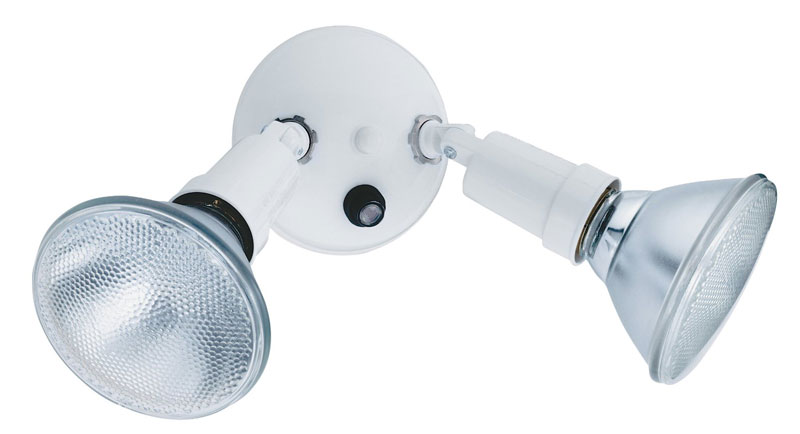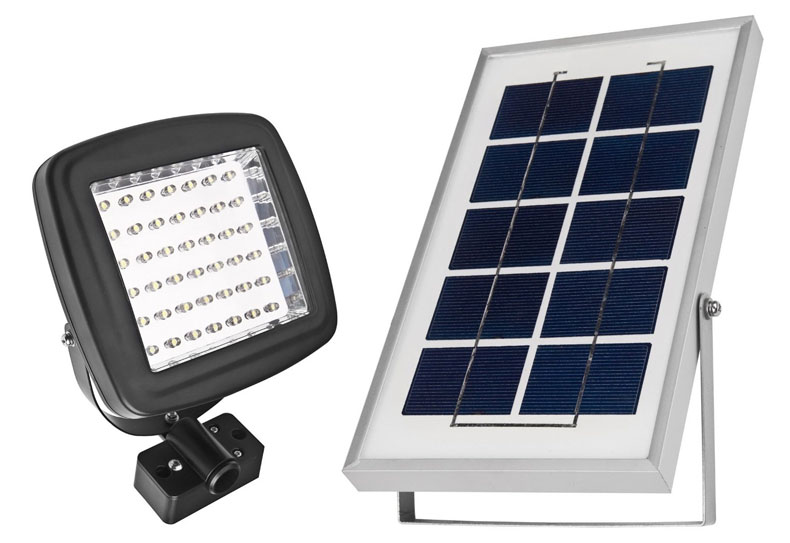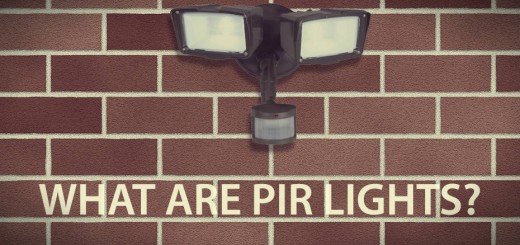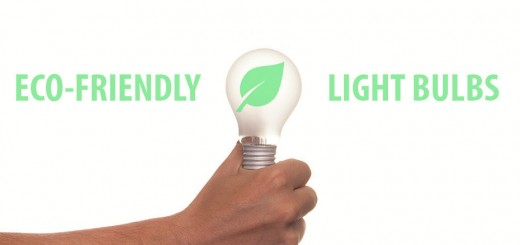Everything You Need to Know About Dusk-To-Dawn Flood Lights
There are many ways how you can increase the safety of your home. Some of the most common of the methods such as proper locks and high-quality alarm systems are probably already known to you. However, another feature you should certainly consider is the illumination of your house since the environmental design is known to play a significant role in ensuring safety.
Although there are not too many data available proving or disproving whether illuminated house is more attractive to burglars or not, it is a common view that a porch or yard which is being illuminated during the night-time will at least give you a larger sense of security and will make it easier to notice any unwanted movements and actions going on around your property.
For these purposes, people mainly go for outdoor flood lights as due to their specifics (wide beam angle) this is the best choice for illuminating wide areas and large objects such as your home. There are many types of flood lights available with different features and sensors included. One type of outdoor flood lights is dusk-to-dawn flood lights and this article will give you all the relevant information on what exactly dusk-to-dawn flood lights are and how do they function plus at the end of the article you will be provided with some basic tips that can be helpful if you are actually about to go to a store and make dusk-to-dawn flood lights part of the exterior of your home.
What are dusk-to-dawn outdoor flood lights?
In order to understand the specifics of any type of flood light it is good to establish the knowledge of what a flood light is and for what particular purposes it is usually being used.
To put it in brief, flood light is an artificial light source that has a peculiarly wide light beam. Therefore by using a flood light it is possible to illuminate large and wide areas such as football fields, parking lots, entrances of buildings, swimming pools, concert halls, etc. In many cases, flood lights are also used to provide lighting for large-scale events (e.g. sports games, outdoor concerts, theatre plays, etc.). Since there is no other light that could illuminate the whole house and yard better than a flood light, more and more private house owners make the decision to install flood lights in front of their houses for extra safety and aesthetic reasons.
Of course, ever since its invention, the technology of flood light has been developed quite notably so now you have multiple types of flood light available to choose from. The newest generation flood lights come equipped (or are compatible with) different sensors that can be used according to one’s needs. One of such features is a dusk-to-dawn sensor which makes the light to go on during the particular hours of the day.
Flood lights with dusk-to-dawn settings basically work by sensing the amount of natural light and they turn on only when it has reached particular level of dimness. As the name of the flood light indicates, it works from dusk to dawn i.e. it will work only during the darkest hours of the day and will automatically switch themselves off in the morning. This option seems to be a lot more reasonable and energy-efficient than having your flood lights on all evening and morning. Some people also go for motion sensors but they can be a bit too annoying and react to the movements that you do not want or need to be detected e.g. cars and people passing by. If your main purpose of installing flood lights is to illuminate your home and yard during the night only, then out of the three given options (no sensor, motion sensor or dusk-to-dawn lighting), dusk-to-dawn outdoor flood lights simply seem to be the most reasonable of the choices. Nevertheless, some consumers claim that for them the combination of two sensors has worked out the best. For instance, it is possible to combine dusk-to-dawn settings with passive infra-red (PIR) detector that detects movement.
Tips for installing dusk-to-dawn flood light
Now that you know for what purposes dusk-to-dawn flood lights are the most suitable, you can carry on with choosing one for your own home. As you will surf through online catalogs or pay a visit to your local retailer, you will notice that there is a quite large variety of manufacturers that provide this product. However, the manufacturer is not the most important of the elements you should focus on. Thorough planning of the installation of your flood lights is actually a lot more crucial. Here are some of the aspects that have to be regarded when installing any type of outdoor flood lights, including dusk-to-dawn flood lights:
- The light should not be too bright. You probably just want to illuminate your property and not the people passing by or what’s even worse – the house of your neighbors. While LED lamps tend to be the best option for energy efficiency, HID lamps can provide lower light levels without any glare.
- Locate the light so that it illuminates the object you actually want to illuminate. If possible, install the light no less than 3m (10 feet) above the ground and make sure they are angled downwards. As mentioned, flood lights can be very bright depending on the wattage of the bulb. If you will have your flood lights too bright and aimed awry, it might cause a completely unnecessary glare that actually can disturb the visibility and will have counter-effect of what you really want to achieve.
- Follow the costs. If you are really into the environmentally-friendly lifestyle but do not want to give up your flood lights, it is also possible to have them run by solar energy.
It will be a good long-term investment and actually is something you can surely consider if you plan to live in your house for many years to come. Also, installing proper bulbs can help a great deal in minimizing lighting-related costs. Certainly, forget about any incandescent light bulbs and better go for LED lamps that are more energy-efficient and won’t make your electricity bill rocket high after the installation of outdoor flood lights.






Hi,
I would like to replace an old dusk to dawn fixture that no longer works. I noticed that similar to garage motion lights the old fixture is wired into the house circuitry but has no dedicated on/off (wall) switch. I assume the dusk to dawn fixtures are safe to use in this configuration ( i.e. no switch) but wanted to ask and be sure I’m not missing some safety issue. Thanks in advance.
Hi Ed,
You’re correct. Dusk to dawn lights have a built in sensor (photosensor) that detects light level, when it gets darker it turns on the light and when it gets brighter it turns off the light.
However, you must make sure that it operates correctly, as sometimes these lights tend to go for days without turning off or on.
Arthur.
Hi Arthur
We’ve just replaced an old porch light which worked on a dawn to dusk sensor but had stopped working properly. the new light came with a sensor but it keeps flashing on and off in the dark. the electricians have said that this is because the sensor is too close, although it is in exactly the same place as the previous one. it seems silly to me as presumably all dawn to dusk sensors set the light on so must have to be able to cope with this. Is there anything we can do apart from moving the sensor somewhere else, which will be expensive? any help gratefully appreciated. Caroline
One way to try and fix this problem without having to move your light is to buy the proper watt bulb for your fixture, as sometimes this is the cause for a dawn to dusk sensor light flicker at random times. Another solution I can think of is to replace the light sensor in the fixture if the sensor itself is the problem.
As for what the electrician said since different lights have different sensors it might, indeed, be that the new light has a more sensitive sensor and therefore it keeps flashing on and off. You can also try to angle the light down and towards the ground and that might help with the light working like it should.
Dear Arthur, thanks so much for your advice. we found a bulb that incorporates a dusk to dawn sensor and tried it for a couple of nights with the wall sensor disconnected on a trial basis. it is working well so we have made it permanent. Best wishes, Caroline
Happy to help, Caroline! And glad to hear that you found a solution to your flickering porch light problem.
Dear Arthur
Thank you so much for this useful information. I have a porch with two can lights (one on each end of the porch) and was wanting to install dusk to dawn bulbs in them. However, I wasn’t sure how far apart they need to be so they don’t sense each other and have only one work. Thanks!
Amanda
Glad you find my article helpful, Amanda! Happy to help!
I intend on replacing the current traditional light fixture (controlled by a switch inside of my home) with a dusk till dawn fixture. How will that affect the usage of the switch currently in my home that used to control the old fixture that this new one replaced? Do I have to keep the switch in the on position all the time or will the dusk roll dawn sensor still turn the new fixture on if the switch is in the off position? Thanks
Yes, if it’s connected to the same switch, the switch should be left ‘’on’’ at all times (unless you want to turn off the fixture in general)
How to adjust the sensitivity to get the dusk to dawn feature done at day time.
Switch it to ‘’Test’’ mode, this will make the lights work during both day and night.
Hi Arthur….
I wondering if I can some of your tips .
I have an old Brink’s delayed outdoor light.
My issue is my light does not turn off, it stays on all day.
Would there be any way I can fix this issue.
Any advise would be nice.
Hi!
First, you should make sure the sensors of your lights are clean. You can also think about whether you might have accidentally turned on the auto-on setting, which with some lights can happen if you turn them off and on within a short period of time (e.g. 3 seconds). In this case, you should switch the lights off, wait a little, then switch back on (it should reset them).
My light won’t turn off. I think its dusk to dawn. Not sure. It is hard wired and has one switch that is for – off, 3,6 or dusk to dawn. The other switch is – test, 1,5 10 min. Any option I do the light bulb just stays on all the time. I would appreciate any help.
Thanks
Brendan
You can always try resetting the lights manually. Perhaps there has been an override that makes the lights stay on. Assuming the product isn’t faulty itself.
Hello Arthur, I am about to install two Dusk to Dawn photo cell lights, about 2 metres apart at the same height, but worried that one light will come on but the other will NOT, as the light will think it is day light, so could you please advise me if there is something called PHOTO CELL LIGHT SHIELD which can go on the side of the Sensor to cover one side, fooling the sensor that it is dark and this will make both lights to come on, pardon me if this is not explained properly
The cell can be shielded. Also, since you can use the same cell for both lights, this shouldn’t be much of an issue if you pick the right location for it.